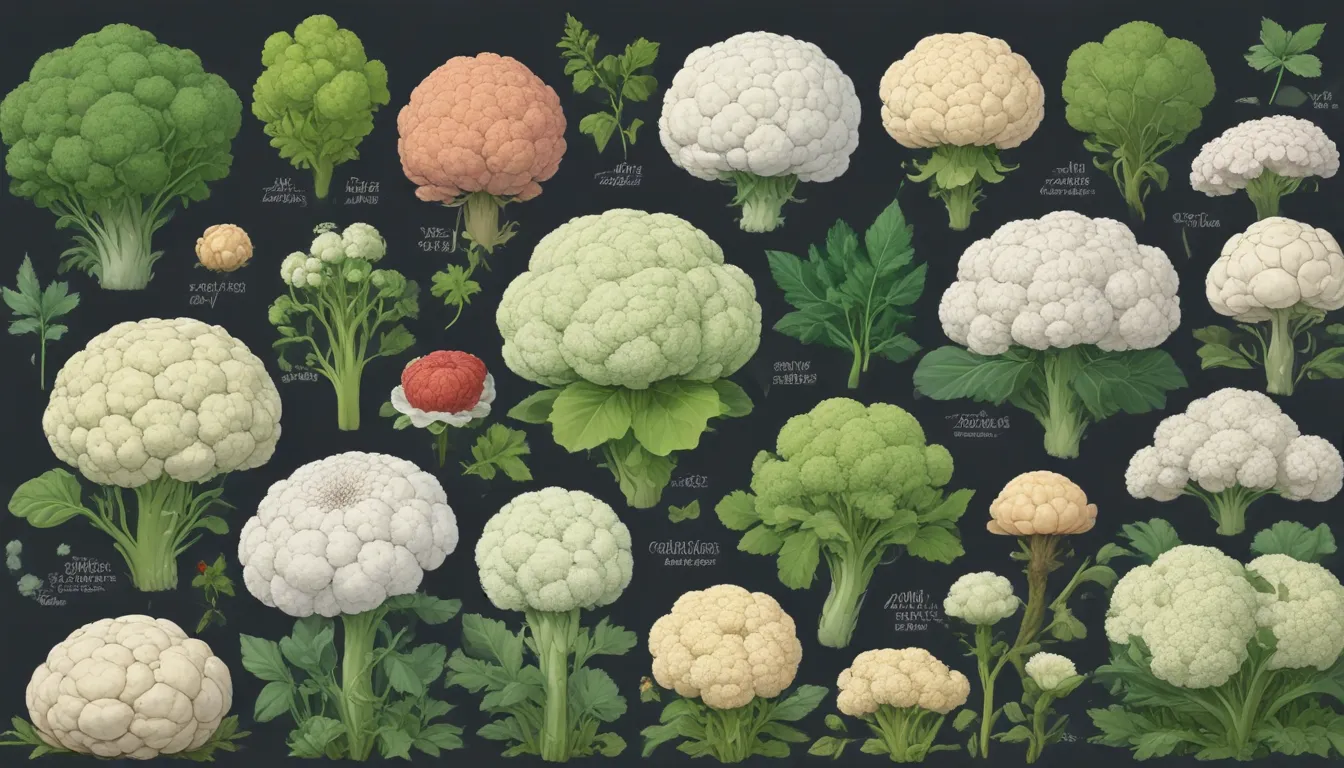Complete Guide to Identifying and Managing 9 Common Cauliflower Pests

Are you ready to dive deep into the world of cauliflower pests? Just like its brassica cousins, cauliflower is susceptible to a variety of insects that can wreak havoc on your precious crops. In addition to causing damage to leaves, heads, and roots, these pests can also spread diseases that pose an even greater threat to your plants.
Don’t worry, though! In this comprehensive guide, we’ll walk you through everything you need to know about identifying and managing common cauliflower pests. From tiny aphids to voracious cabbage worms, we’ve got you covered. So grab your gardening gloves and let’s get started!
9 Common Cauliflower Pests
Let’s take a closer look at the lineup of common cauliflower pests you may encounter in your garden:
- Aphids
- Cabbage Loopers
- Cabbage Moths
- Cabbage Root Maggots
- Cabbage White Butterflies
- Cabbage Whiteflies
- Cross-Striped Cabbage Worms
- Flea Beetles
- Slugs and Snails
Now that we know who we’re up against, let’s explore these pests in more detail and learn how to combat them effectively.
1. Aphids
The dreaded cabbage aphid is a tiny sap-sucking insect that can wreak havoc on your cauliflower plants. These pests not only feed on leaves and heads but can also spread diseases like cauliflower mosaic virus. Keep an eye out for telltale clusters of aphids on the undersides of leaves, and be prepared to take action.
Management Tips:
- Rinse off aphids with a firm stream of water
- Use neem oil as a natural insecticide and fungicide
2. Cabbage Loopers
Don’t be fooled by the inchworm-like gait of cabbage loopers – these caterpillars can decimate your plants in no time. Keep an eye out for their distinctive green bodies and white stripes, and take action to protect your crops.
Management Tips:
- Use organic Bacillus thuringiensis (Bt)
- Try a home remedy like dousing plants with white flour
3. Cabbage Moths
The cabbage moth, also known as the diamondback moth, is one of the most destructive pests when it comes to brassica crops. Keep an eye out for their transparent yellow larvae and white diamonds on their wings.
Management Tips:
- Consider trap cropping with collard greens
- Use neem oil or Bt as a natural pesticide
4. Cabbage Root Maggots
These tiny maggots can wreak havoc on your cauliflower plants by feeding on the roots. Keep an eye out for signs of infestation and take action to protect your crops.
Management Tips:
- Apply diatomaceous earth to discourage egg laying
- Consider using beneficial nematodes to attack soilborne pests
5. Cabbage White Butterflies
These voracious caterpillars are born with a hearty appetite for your cauliflower leaves and heads. Keep a close eye on your plants and be prepared to take action to protect them.
Management Tips:
- Handpick and destroy caterpillars
- Use Bt or pyrethrin as organic treatments
6. Cabbage Whiteflies
While cabbage whiteflies may not damage heads, they can disfigure your plants and promote sooty mold growth. Consider introducing beneficial lacewings to your garden as a natural deterrent.
Management Tips:
- Introduce lacewings to feed on whiteflies
- Treat undersides of leaves with specific pesticides
7. Cross-Striped Cabbage Worms
These unique pests lay flat yellow patches of eggs on the undersides of foliage. Be proactive in controlling these pests to protect your cauliflower plants.
Management Tips:
- Use moth egg parasites like Trichogramma brassicae
- Consider handpicking caterpillars when you see them
8. Flea Beetles
These beetles may make shallow cuts in your brassica leaves, but they can still cause damage to your plants. Consider using pyrethroid foliar spray as a chemical treatment.
Management Tips:
- Use floating row covers or trap cropping with mustard
- Be proactive in protecting your plants
9. Slugs and Snails
Watch out for the telltale signs of slimy trails and smooth holes indicating the presence of slugs and snails in your garden. Take proactive steps to protect your plants before they become a feast for these pests.
Management Tips:
- Use beer traps or products containing iron phosphate
- Avoid overwatering and create a hostile environment for slugs and snails
With a solid understanding of these common cauliflower pests and effective management strategies, you can protect your crops and ensure a successful harvest. By staying vigilant and taking proactive steps to control these pests, you’ll be well on your way to enjoying a bountiful cauliflower crop in your garden.
Have you encountered any of these cauliflower pests in your garden? Share your experiences and tips in the comments below!
If you found this guide helpful, be sure to check out our other informative articles on cauliflower gardening:
– 13 of the Best Cauliflower Varieties for the Home Veggie Garden
– When and How to Blanch Maturing Cauliflower Heads
– When and How to Harvest Cauliflower
– How to Grow and Care for Romanesco Broccoli
Remember, where there’s a will, there’s a way! With the right knowledge and strategies, you can overcome any challenge in your garden and enjoy the fruits (or veggies) of your labor. Happy gardening!





